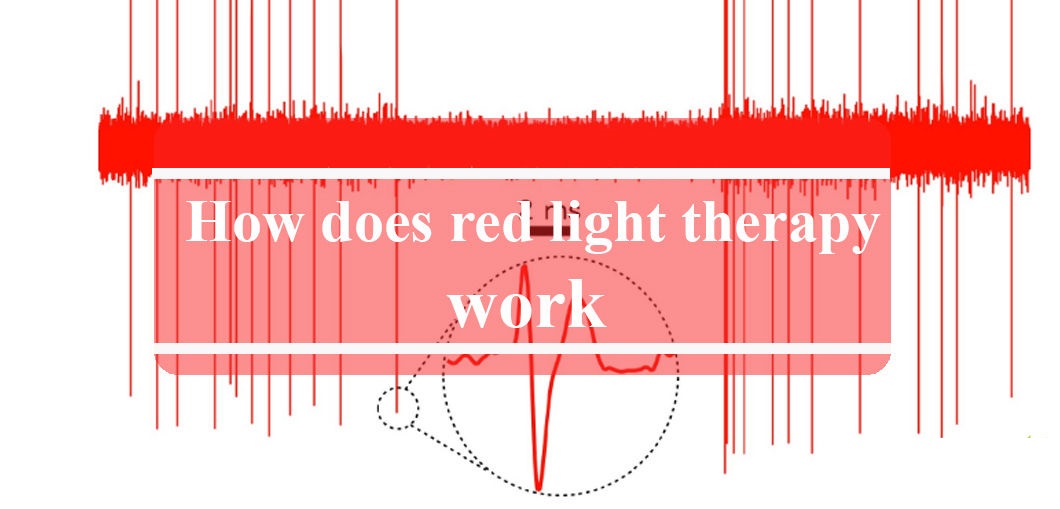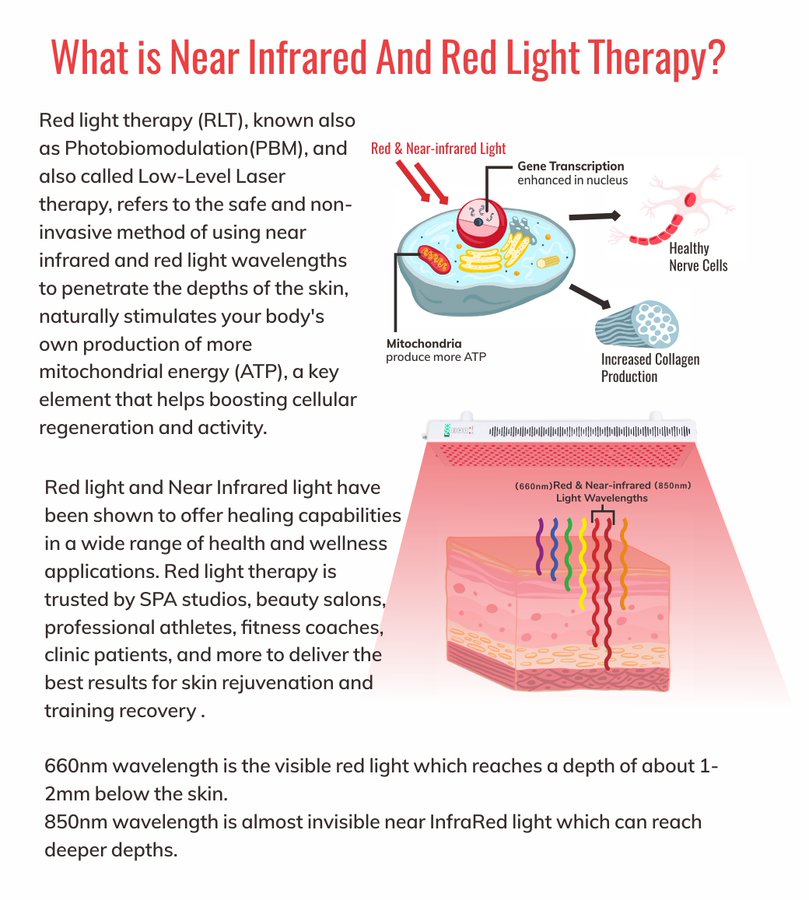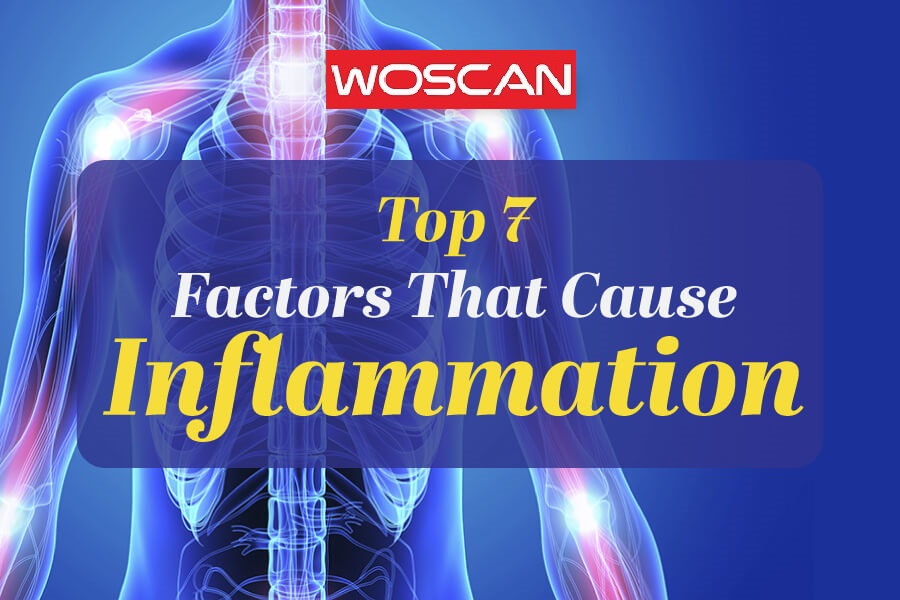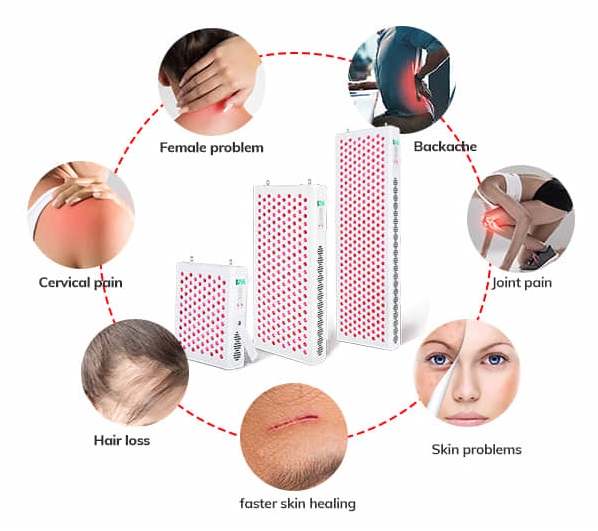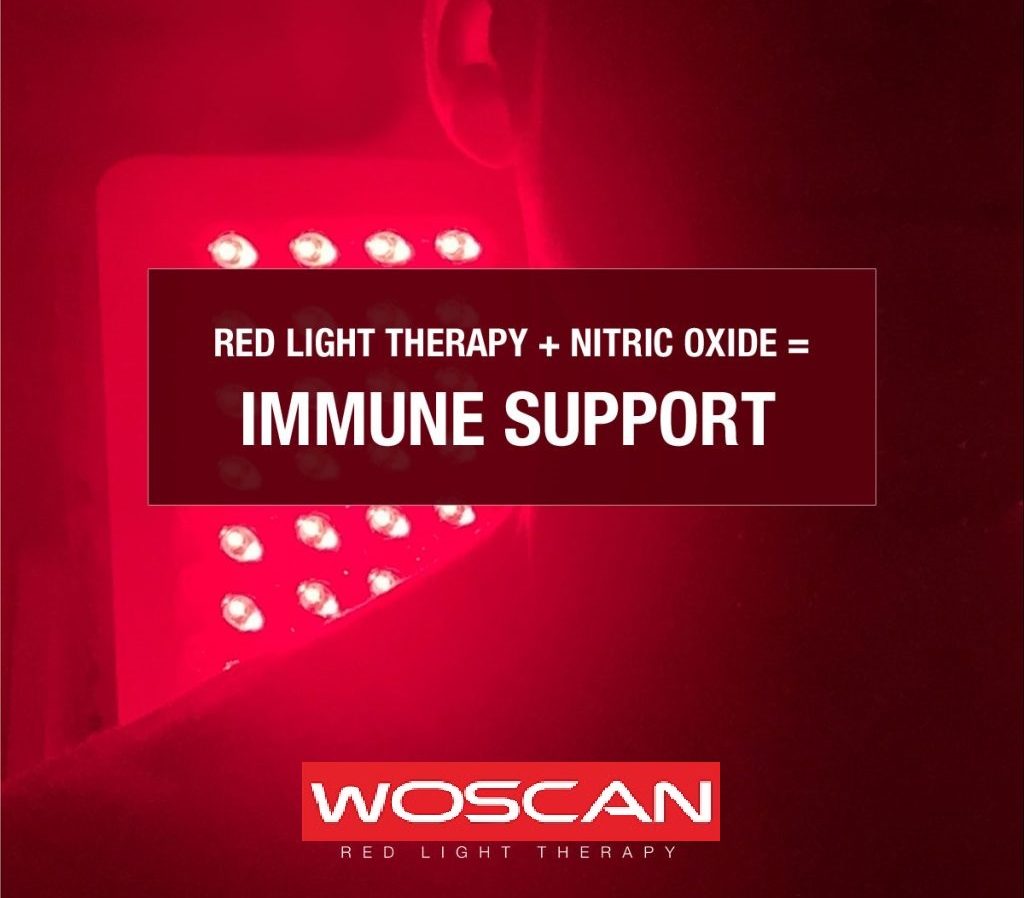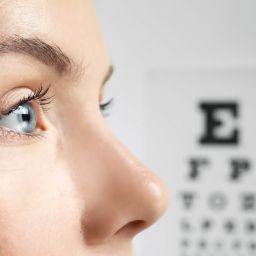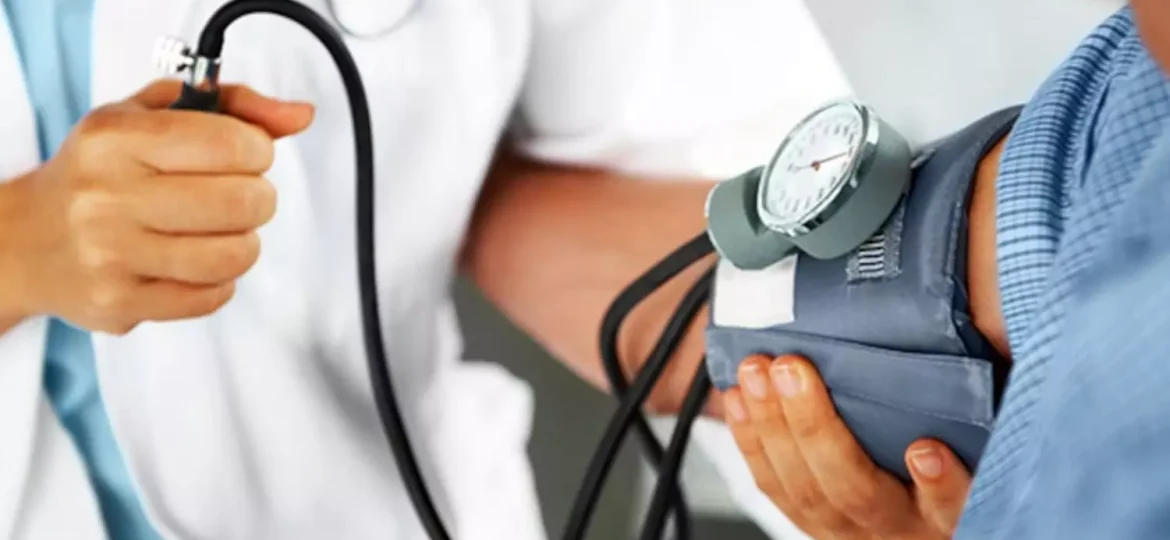
Hypertension, often referred to as high blood pressure, is a prevalent health concern affecting millions of individuals worldwide. It is a condition characterized by elevated arterial pressure, a major risk factor for cardiovascular diseases, stroke, and other serious health issues. In the pursuit of effective and holistic approaches to hypertension management, the world of therapy has witnessed a remarkable innovation: Red Light Therapy (RLT).
Below, we will explore the biological and scientific intricacies behind this remarkable therapy and its potential role in managing hypertension. RLT, also known as photobiomodulation therapy or low-level laser therapy, harnesses the power of specific wavelengths of light to enact profound changes within our cells, ultimately influencing our physiological responses.
In this article, we will explore the intriguing mechanisms of action through which RLT exerts its influence on hypertension. We will delve into the scientific evidence supporting its efficacy and share clinical studies of this cutting-edge therapy. Moreover, we will provide you with practical guidance on how to incorporate RLT into your hypertension management plan, always with a focus on your health and well-being.
Let’s embark on this illuminating journey to discover how RLT may offer a natural and promising approach to managing hypertension, unlocking the potential for a healthier, happier life.
What Is Hypertension?
Hypertension, often colloquially referred to as high blood pressure, is a complex physiological condition that warrants a comprehensive understanding. It is crucial to grasp the intricacies of this condition before exploring the potential of Red Light Therapy (RLT) as a therapeutic intervention.
This condition is defined as a chronic medical condition characterized by elevated arterial blood pressure. Blood pressure is the force exerted by the blood against the walls of the arteries as the heart pumps it around the circulatory system. It is typically measured in millimeters of mercury (mm Hg) and consists of two values: systolic pressure (the pressure during heartbeats) and diastolic pressure (the pressure when the heart is at rest between beats).
- Systolic Pressure: This is the higher number in a blood pressure reading and reflects the pressure when the heart contracts and pumps blood into the arteries.
- Diastolic Pressure: This is the lower number and represents the pressure in the arteries when the heart is at rest between beats.
Hypertension is influenced by a multitude of risk factors, both modifiable and non-modifiable. Understanding these risk factors is essential in managing the condition effectively.
NON-MODIFIABLE RISK FACTORS:
- Age: Blood pressure tends to increase with age.
- Genetics: A family history of hypertension can predispose individuals.
- Gender: Men are often at higher risk until age 64; after 65, women are at higher risk.
MODIFIABLE RISK FACTORS:
- Lifestyle Choices: Diet high in salt, low in potassium, excessive alcohol intake, and lack of physical activity.
- Obesity: Excess body weight puts additional strain on the cardiovascular system.
- Smoking: Tobacco use can elevate blood pressure and damage blood vessels.
- Stress: Chronic stress can contribute to hypertension.
The Importance of Effective Hypertension Management
Uncontrolled hypertension can have severe health consequences, including:
- Cardiovascular Diseases: Hypertension is a major risk factor for heart disease, stroke, and other vascular diseases.
- Kidney Damage: Elevated blood pressure can harm the kidneys, leading to kidney disease or failure.
- Eye Complications: High blood pressure can damage blood vessels in the eyes, potentially leading to vision problems.
Understanding hypertension’s complexities, risk factors, and potential health consequences provides a solid foundation for exploring how Red Light Therapy may play a role in managing this critical condition.
Red Light Therapy: A Primer
Before delving into the potential benefits of Red Light Therapy (RLT) for hypertension, it’s essential to have a fundamental understanding of this innovative therapy, its historical context, and the biological mechanisms that underpin its therapeutic effects.
Red Light Therapy, also known as photobiomodulation therapy or low-level laser therapy, represents a cutting-edge approach to harnessing the therapeutic power of specific wavelengths of light. Unlike traditional medical treatments, RLT is non-invasive, painless, and free from the side effects commonly associated with medications or surgical procedures. Instead, it relies on the principles of photobiomodulation to stimulate beneficial changes within our cells.
The roots of RLT trace back to the pioneering work of Hungarian physician Endre Mester in the 1960s. Mester discovered that low-level laser therapy had the unexpected effect of promoting hair growth in laboratory mice. This serendipitous discovery marked the beginning of a journey into the therapeutic potential of light.
Over the years, researchers have refined and expanded upon Mester’s work, uncovering the myriad ways in which specific wavelengths of light can influence biological processes. Today, RLT has evolved into a versatile therapy with applications in various fields, including dermatology, sports medicine, and, as we shall explore, cardiovascular health.
HOW RED LIGHT THERAPY WORKS:
To comprehend the therapeutic power of RLT, we must delve into its biological and physiological mechanisms of action. At its core, RLT works by interacting with our cells’ mitochondria, the energy powerhouses responsible for producing adenosine triphosphate (ATP), the molecule that fuels cellular activities. Here’s a breakdown of the key mechanisms involved:
- Absorption of Specific Wavelengths of Light: RLT devices emit specific wavelengths of red and near-infrared light. These wavelengths are chosen because they penetrate the skin and are readily absorbed by our cells.
- Role of Mitochondria and ATP Production: When exposed to these specific wavelengths of light, the mitochondria in our cells absorb the photons. This interaction stimulates an increase in ATP production, enhancing cellular energy metabolism.
- Activation of Nitric Oxide (NO) and Vascular Response: RLT has been shown to activate the release of nitric oxide (NO) within blood vessels. NO is a vital molecule that helps regulate vascular tone and blood flow. By increasing NO production, RLT can influence the dilation of blood vessels, improving circulation.
- Influence on Oxidative Stress and Inflammation: RLT has a notable impact on reducing oxidative stress and inflammation. It helps to restore cellular balance, reduce the production of damaging reactive oxygen species (ROS), and modulate the body’s inflammatory responses.
Understanding these intricate biological processes highlights the potential of RLT as a therapy that operates at the cellular level, influencing key physiological factors relevant to hypertension. In the following sections, we will delve deeper into the scientific evidence supporting RLT’s efficacy and explore its implications for managing hypertension.
Red LigHt Therapy: Scientific Evidence
The potential benefits of Red Light Therapy (RLT), scientifically referred to as photobiomodulation therapy (PBMT), in various health contexts, including hypertension, are supported by a growing body of research. Here, we delve into the scientific evidence, highlighting key studies that shed light on the physiological mechanisms and positive effects of PBMT.
Study: “Changes in Circadian Variations in Blood Pressure, Pain Pressure Threshold, and Tissue Elasticity after a Whole-Body Photobiomodulation Treatment in Patients with Fibromyalgia: A Triple-Blinded Randomized Clinical Trial“
This randomized clinical trial explored the effects of whole-body PBMT on patients with fibromyalgia, condition characterized by chronic pain and tenderness in muscles and soft tissues. The study uncovered intriguing insights into the broader impact of PBMT, including its effects on circadian blood pressure and tissue properties. Notable findings include:
“Whole-body PBM produces changes in circadian blood pressure, the pain pressure threshold and the elasticity of tissue after a treatment program was carried out.”[1] indicating that PBMT can influence the circadian variations in blood pressure, which are relevant to conditions like hypertension.
These outcomes suggest that PBMT has the potential to modulate pain perception and tissue properties, which may be relevant in the context of hypertension management and overall cardiovascular health.
Study: “Can Photobiomodulation Therapy (PBMT) Control Blood Glucose Levels and Alter Muscle Glycogen Synthesis?“
This study explored the effects of PBMT on blood glucose levels and muscle glycogen synthesis, particularly its potential to induce these changes independently of physical exercise. The results of this study provided valuable insights into the broader applications of PBMT in metabolic health. Key findings included:
“These results suggest that PBMT can play a very important role in the control of blood glucose levels, and its possible mechanism of action is the induction of greater muscle glycogen synthesis independently of physical exercise.”[2] This implies that PBMT has the potential to influence glucose metabolism, which is closely linked to conditions like hypertension and cardiovascular health.
Muscle glycogen synthesis is a crucial aspect of glucose regulation, and PBMT’s ability to enhance this process could have implications for hypertension management.
These studies underscore the multifaceted potential of PBMT in influencing various physiological processes beyond its immediate applications. PBMT appears to have a broader impact on circadian blood pressure, pain perception, tissue properties, and metabolic factors like blood glucose levels and muscle glycogen synthesis. While these studies provide valuable insights, it is essential to recognize that further research is needed to fully understand the extent of PBMT’s benefits in hypertension and other health contexts.
In the subsequent sections, we will continue to explore the potential benefits of PBMT for hypertension management, emphasizing the scientific foundations that underpin its mechanisms of action.
Benefits of Red Light Therapy for Hypertension
Understanding the potential benefits of Red Light Therapy (RLT) for hypertension requires delving into the intricate biological and physiological mechanisms through which this therapy operates. Here, we explore how RLT may positively impact blood pressure regulation and the cardiovascular system.
LOWERING BLOOD PRESSURE
RLT offers a promising avenue for reducing high blood pressure, which is a hallmark of hypertension. The therapy’s effects on blood pressure can be attributed to several physiological mechanisms:
- Regulation of Vascular Tone: RLT influences the endothelium, the inner lining of blood vessels, to enhance its function. The endothelium plays a pivotal role in regulating vascular tone by producing nitric oxide (NO), a potent vasodilator. When RLT stimulates the endothelium, it can lead to increased NO production, resulting in blood vessel dilation and reduced vascular resistance. This vasodilatory effect contributes to the lowering of blood pressure.
- Improved Blood Circulation: RLT’s influence on blood flow is another key factor. By increasing microcirculation, the therapy enhances the delivery of oxygen and nutrients to tissues. Improved circulation reduces the workload on the heart, potentially leading to a reduction in systolic and diastolic blood pressure readings.
REDUCED RISK OF CARDIOVASCULAR COMPLICATIONS
Hypertension is a significant risk factor for cardiovascular diseases, including heart attacks and strokes. RLT may offer protective effects against these complications through various mechanisms:
- Reduced Oxidative Stress: RLT has been shown to reduce oxidative stress, a state of imbalance between free radicals and antioxidants in the body. Excess oxidative stress can damage blood vessels and promote atherosclerosis, a process that narrows and hardens arteries. By mitigating oxidative stress, RLT may help maintain vascular health.
- Anti-Inflammatory Effects: Chronic inflammation is a contributing factor to cardiovascular diseases. RLT’s ability to modulate inflammatory responses can potentially reduce the chronic low-grade inflammation associated with hypertension and its complications.
LONG-TERM IMPLICATIONS FOR HYPERTENSION MANAGEMENT
Hypertension is often a chronic condition that requires long-term management. RLT’s non-invasive nature, coupled with its potential to address fundamental physiological processes, makes it an attractive option for individuals seeking holistic and sustainable approaches to hypertension management. Incorporating RLT into your regimen under the guidance of healthcare professionals can complement other strategies, such as lifestyle modifications and medication, to achieve better blood pressure control.
In our chart you can find specific wavelength recommendations for each condition.
In the pursuit of effective hypertension management, we have embarked on a journey through the intriguing world of Red Light Therapy (RLT), also known as photobiomodulation therapy. Our exploration has revealed the profound biological and physiological mechanisms through which RLT exerts its influence on hypertension and cardiovascular health.
From the activation of nitric oxide (NO) and the enhancement of vascular responses to the reduction of oxidative stress and inflammation, RLT operates at the cellular level, influencing key factors that impact blood pressure regulation. Scientific evidence underscores the potential of RLT to induce long-lasting hypotensive effects and promote vasodilation via an NO-dependent mechanism.
The benefits of RLT for hypertension management extend beyond merely lowering blood pressure. RLT offers the potential to reduce the risk of cardiovascular complications by mitigating oxidative stress and modulating inflammatory responses. It complements conventional medical interventions, providing a holistic approach to managing this critical health condition.
As you consider incorporating RLT into your hypertension management plan, remember the importance of consulting with healthcare professionals who can guide you on the suitability of this therapy for your unique needs. Choose RLT devices or clinics that adhere to recommended wavelengths and energy dosages, aligning with scientific findings. Try our dosing calculator for optimal results.
Consistency in your RLT treatment, diligent monitoring of your blood pressure, and regular consultations with experts will help you track your progress effectively. RLT is not a standalone solution but a valuable complementary therapy that can enhance your efforts toward achieving better blood pressure control and overall cardiovascular health.
In conclusion, Red Light Therapy opens a promising door to a natural and scientifically supported approach to managing hypertension. By integrating RLT into your hypertension management plan, under the guidance of healthcare professionals, you can embark on a path toward a healthier and more balanced life. It’s a journey that illuminates the potential for improved well-being, one light therapy session at a time.
[1] Navarro-Ledesma S, Carroll J, González-Muñoz A, Pruimboom L, Burton P. Changes in Circadian Variations in Blood Pressure, Pain Pressure Threshold and the Elasticity of Tissue after a Whole-Body Photobiomodulation Treatment in Patients with Fibromyalgia: A Tripled-Blinded Randomized Clinical Trial. Biomedicines. 2022 Oct 23;10(11):2678. doi: 10.3390/biomedicines10112678. PMID: 36359198; PMCID: PMC9687325.
[2] Castro KMR, de Paiva Carvalho RL, Junior GMR, Tavares BA, Simionato LH, Bortoluci CHF, Soto CAT, Ferraresi C. Can photobiomodulation therapy (PBMT) control blood glucose levels and alter muscle glycogen synthesis? J Photochem Photobiol B. 2020 Jun;207:111877. doi: 10.1016/j.jphotobiol.2020.111877. Epub 2020 Apr 7. PMID: 32298941.





